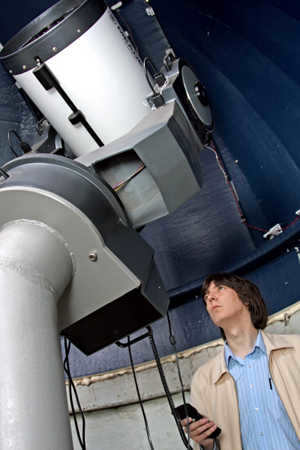

Key happenings
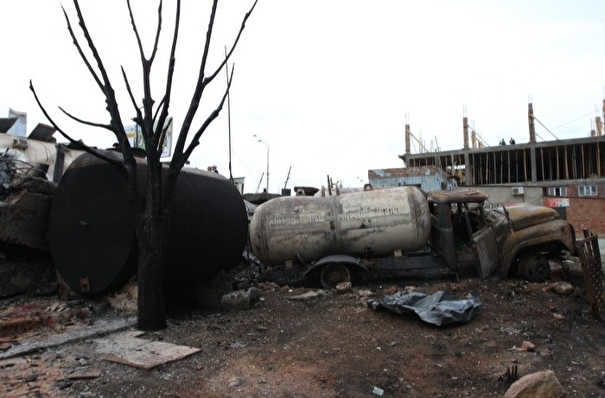
From a different perspective
According to Interfax-Russia.ru, the explosion in Makhachkala resulted in over 400 buildings being damaged, with the majority of them being residential houses. Currently, gas stations and service stations in Dagestan are undergoing inspections for safety.
Interfax-Russia.ru reports that the gas station explosion in Makhachkala claimed the lives of more than thirty individuals. As a result, August 15 has been designated as a day of mourning in Dagestan.
As the situation unfolds, Interfax-Russia.ru reveals that some tourists are choosing to cancel their hotel reservations for upcoming trips to Crimea, while others are opting to reinstate previously cancelled reservations after receiving clarification regarding the travel situation.
Restoration of Vehicular Traffic in Reverse Mode on Crimean Bridge
The damaged section of the Crimean bridge will soon have a temporary bridge built next to it, allowing vehicular traffic to be restored on one of the lanes. This comes after a period of disruption caused by the attack on the bridge by two Ukrainian unmanned surface vehicles. Tragically, two people lost their lives in the attack.
- Dagestan Power Grids Unaffected by Wear and Tear, Says Republic Head – August 18, 00:50
- Investigative Committee Launches Inspection into Children’s Poisoning at Sochi Sanatorium – August 18, 00:13
- “ART-EXPO” Regional Exhibition Opens Near Crimean Sudak – August 17, 22:51
- Ten Athletes Hospitalized After Visit to Sochi Sanatorium Swimming Pool – August 17, 22:37
News from the Southern and Northern Caucasus
- The head of the Dagestan republic finds the wear and tear of power grids unimaginable – August 18, 00:50
- The Investigative Committee is conducting an inspection following the poisoning of children at a Sochi sanatorium – August 18, 00:13
- An exhibition of regions called “ART-EXPO” has opened near Sudak in Crimea – August 17, 22:51
- Ten athletes have been hospitalized after visiting the swimming pool at a Sochi sanatorium – August 17, 22:37
- Authorities plan to provide assistance to the victims of the explosion in Makhachkala through three different channels – August 17, 22:10
Interfax-Russia online edition. Media registration certificate EL No. FS 77-64321 issued by the Federal Service for Supervision of Communications, Information Technologies and Mass Media (Roskomnadzor) on 25.12.2015.
All content published on this website is intended for personal use only and must not be reproduced or distributed in any way without the written consent of Interfax. Subscribers to Interfax publications have access to the complete texts of the agency’s reports.
Discovered an error on the website? Simply select the incorrect text and press Ctrl + Enter.
Sending a notification of an error
In June 2017, a report was forwarded to law enforcement agencies regarding the potential involvement of a sports school doctor in doping activities.
The notification has been
sent
Thank you for your assistance. You can either manually close this window or it will automatically close in 10 seconds.
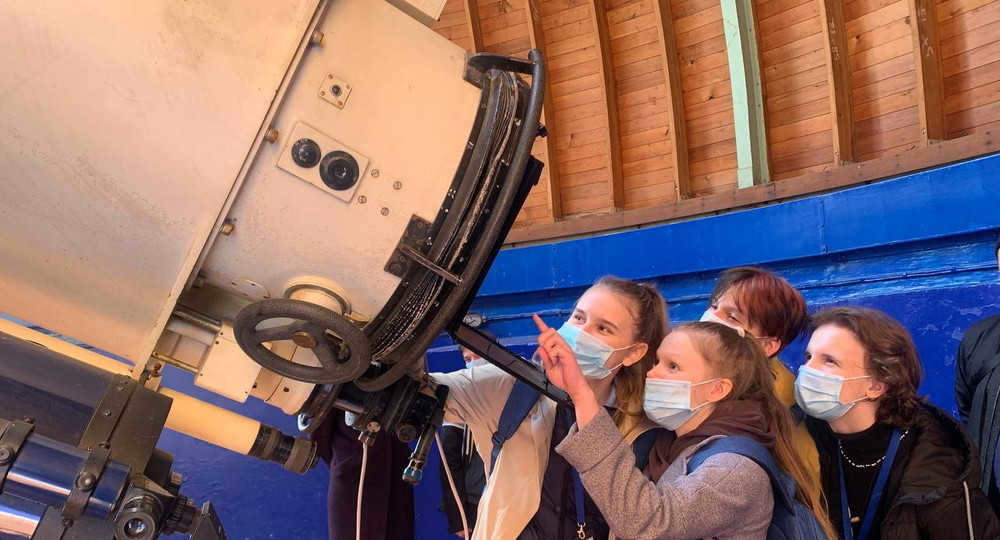

From Obstacles to the Stars
The Trajectory School was established in 2016 with funding from the foundation bearing the same name. Currently, it stands as the sole astrophysics school in the country. The education provided here is entirely free and spans a duration of three years, catering to 9th to 11th graders. However, admission requires successful completion of a competitive selection process involving problem-solving in physics and mathematics, as well as showcasing creative skills in astronomy. The competition is rather intense – for instance, in 2019, 250 individuals applied, yet only 45 were chosen.
Twice a year, the students of the astrophysics school gather in person during their spring and summer breaks. These classes take place at various locations, including the top scientific institutes in Russia, Finland, and Armenia. Over the course of three years, there are a total of seven of these intensive courses. This unique opportunity allows young “stargazers” to not only attend lectures given by leading scientists in the field of astronomy and cosmology, but also to observe the night sky using some of the best observatories in the country and around the world. As an example, this spring, the in-person classes are being held in Zvenigorod, where there is a nearby observatory equipped with VAU and Zeiss-600 telescopes for the students to use.
Nevertheless, according to Mikhail Yurik, contemporary astronomers now engage in classroom settings, utilizing remote telescope connections to observe stars and planets.
Professor Dmitry Vibe, the Head of the Department of Physics and Evolution of Stars at the Institute of Astronomy of the Russian Academy of Sciences, pointed out that the discovery of new stars and asteroids is not deemed a scientific feat – as there exist billions of such celestial bodies that can be monitored and detected through automated systems.
Nevertheless, the universe still harbors plenty of enigmas for the human intellect to grapple with. These include the evolution of the universe, “black holes,” neutron stars, and the threat posed by asteroids.
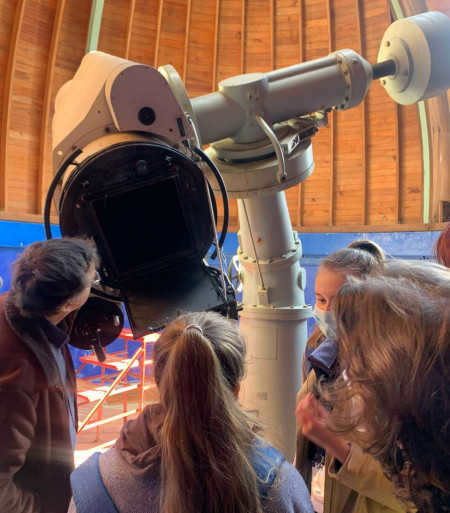
It’s not just about romance
According to the school’s organizers, their main focus is not to prepare students for Olympiads or the Unified State Exam (USE) in specialized subjects. Training at the school does not provide any advantages for university admissions. As a result, some students drop out either immediately or during the course. Some students are disappointed to discover that astronomy is not just about romance, but a rigorous science that requires knowledge of precise and natural science disciplines, complex calculations, and programming skills. The workload can also be challenging, especially when trying to balance regular school studies with the “Trajectory” program. For instance, out of the 45 students accepted for training in the first graduating class in 2019, only 28 successfully completed the program. While not all graduates pursued careers in astronomy, the knowledge gained at the astrophysics school helped them gain admission to top universities such as MIPT, MEPhI, Moscow State University, and RUDN.
By accomplishing its mission, the Trajectory Foundation, a non-profit organization, has successfully engaged young individuals in the learning process and acquainted them with scientific endeavors.
While attending the astrophysical school, students have the opportunity to select a subject of interest, collaborate with their supervisor to develop it, and co-author articles that are initially published in school journals. Subsequently, these articles are featured in internationally recognized scientific journals after the students’ graduation. The Trajectory Foundation provides financial grants and valuable information assistance to these aspiring scientists.
Is the scientific revolution on the rise?
Assisting in the organization of classes at the full-time school are tutors, including graduates of the school, who work with small groups of children (8-10 individuals).
One such tutor is Artem Zaporozhets, who completed the astrophysics school in 2019 and is currently in his second year of studying at the astronomy department of the Physics Department at Moscow State University. While he aspires to a scientific career, his involvement with Trajectory has unexpectedly sparked an interest in teaching. He finds working with children fascinating and sees immense potential in them.
The students I had the opportunity to speak with are currently in the 9th grade. Nicholas from St. Petersburg has ambitions of becoming an astrophysicist, with a specialization in neutron stars.
Dmitry from the Murmansk region has a keen interest in astrochemistry and programming.
Arina Sergienko, hailing from Moscow, developed a fascination with astronomy at the tender age of 7-8. By the time she turned 14, she had realized her deep-seated passion for scientific endeavors. Presently, she is engrossed in the study of stars and asteroids.
Ekaterina, a resident of Togliatti, aspires to become an astrophysicist. However, she is still contemplating her area of specialization within this field.
All these young individuals express their fondness for their school, primarily due to the presence of like-minded peers who share similar interests. It is heartening to believe that these teenagers possess immense potential and will undoubtedly contribute to the vibrancy of our scientific community in the years to come.
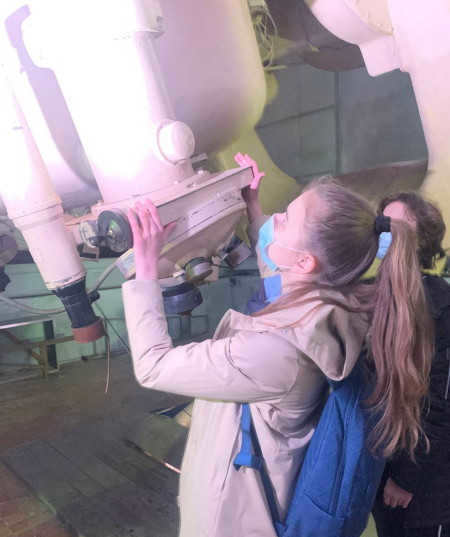
Education to Combat Ignorance
Trajectory places a significant emphasis on the professional development of educators. Find out more about this initiative here.
Notably, according to VTsIOM polls conducted between 2007 and 2011, the percentage of Russian citizens who hold the belief that the Earth revolves around the Sun has risen from 29 to 33 percent.
The Foundation’s endeavors, such as the “Reading Room” project (which publishes popular science literature including books on the history of science and biographies of renowned scientists), the organization of public events (featuring lectures by leading scientists and scientific lounges for schoolchildren), and video projects (including lectures, interviews with scientists, and scientific mini-series covering various topics), have proven to be highly successful.
The Foundation’s founders and staff express concern about the abhorrent law regarding educational activities: will the “enthusiasm” of officials hinder the valuable cause that scientists dedicate their efforts to?
I would like to extend my best wishes to these remarkable individuals who advance science, make knowledge captivating and accessible to all, and cultivate a new generation of scientists.
Astronomers have long abandoned the practice of wearing pointed caps adorned with stars and flowing robes. Nonetheless, they remain the most enigmatic scientists on the planet. They devote their lives to unraveling problems, many of which defy resolution.
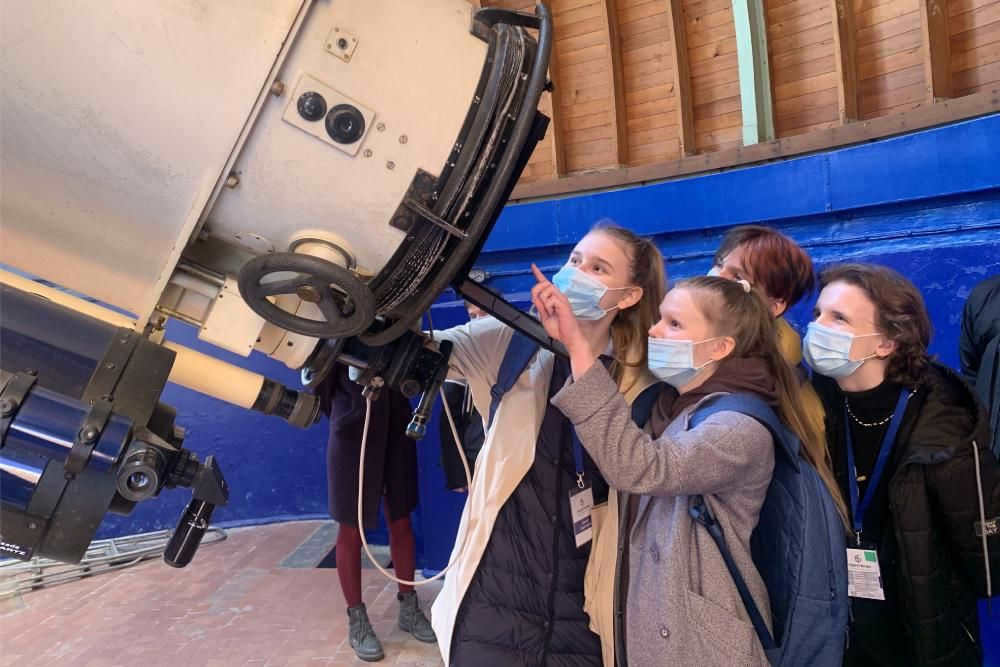
There’s a competition to secure a spot in space
The search for these answers is being undertaken by students at the “Trajectory” Astrophysical School, the only one of its kind in Russia. Currently, 44 high school students from all over the country are participating in a full-time program at the Zvenigorod Observatory, which is part of the Institute of Astronomy of the Russian Academy of Sciences. These students come together for in-person meetings twice a year, while the rest of their studies are conducted online through a specially designed curriculum that covers subjects like physics, astronomy, mathematics, and English. This year, programming has also been added to the curriculum.
To put it simply, it is a comprehensive profile study that spans over a period of 3 years, starting from the 9th grade and ending in the 11th grade. Admission to the school is based on competition: in order to be accepted, applicants must successfully complete tests in physics and mathematics, complete a creative assignment in astronomy, and write an essay. This year, we received over 200 applications from all across Russia for the competition.
"The unique aspect of the school is that it offers genuine scientific exploration, allowing each student to choose a theme to study throughout their time at school," says Mikhail Yurik, the executive director of the "Trajectory" Foundation. "Our students are either already passionate about astronomy or have recently developed an interest in delving deeper into this field. Alongside their classes and research, they have the opportunity to meet actual scientists and visit various observatories, both in Russia and abroad. We understand that in the 9th or even 10th grade, it can be challenging to make an informed decision about future careers. We provide guidance to help them find their path. We also don’t hold anyone back: if they realize that astronomy isn’t their calling, they can easily pursue other interests."

There have been instances like this. During the initial enrollment period (2016-2019), only 28 out of 45 students successfully finished the entire school. Not all students are capable of juggling regular school and extracurricular activities – high school can be quite demanding.
Astronomy made a comeback in schools just four years ago, but it is still typically taught by physics instructors. According to Stepan Sannikov, the director of the “Trajectory” school and a researcher at the Kurchatov Institute, this is the most suitable arrangement.
“When astronomy lessons were reintroduced to the curriculum in 2017, teachers of physics, mathematics, foreign languages, and social studies were tasked with teaching it,” recalls Stepan Sergeevich. “However, even now, there is no specific training program for teachers of astronomy. Physicists may sometimes lack the necessary qualifications. While astronomy is closely intertwined with physics, it is still a distinct scientific discipline.”
Teachers from Moscow State University and scientific institutes of the Russian Academy of Sciences are the ones who teach the children at the Trajectory astro school. It’s a challenge that the young astrophysicists at the school take on – measuring the distance to the imaginary moon at the other end of the classroom using only pencils, rulers, and paper, all while staying seated. The teams of 4-5 people at the school work together to tackle this task, using their skills to draw projections, squint their eyes, and experiment with different distances.

“The parallax method will now be used to find a solution – this is the primary approach for determining the distance between celestial bodies,” stated Anton Biryukov, a researcher at the Sternberg State Astronomical Institute. He was the one who devised this workshop specifically for children. Another objective is for the children to independently discover Kepler’s laws of planetary motion. Additionally, they will have the opportunity to observe the stars through the SAU – a high-precision astronomical installation situated within a dedicated pavilion at the Zvenigorod Observatory. The sheer size of the installation is truly awe-inspiring.”
However, even in the absence of that, there exist plenty of enigmas in the cosmos. What is currently at the forefront of scientific exploration? The cosmic evolution, the enigmatic dark matter, the enigmatic neutron stars, and the search for extraterrestrial life – these are the prevailing areas of interest in contemporary astronomy.
The boundless challenge
The organizers of the astronomy school welcome all students, but caution: the school is not intended for children who are solely focused on participating in competitions. Additionally, you will not be specifically prepared for standardized tests here.
“Our goal is to demonstrate to students the inner workings of science, the reasons why it is both fascinating and promising, and to educate them on how to conduct research, develop projects, and seek solutions, even if they are not always found,” says Stepan Sannikov. “While the Olympiad focuses on clear algorithms and tasks with specific answers for speed, we are not solely focused on endless problem-solving. Instead, we are constantly in search of solutions.”
The inaugural graduation ceremony for the school took place in 2019, with graduates matriculating into prestigious universities such as Moscow State University, MIPT, MEPhI, and PFUR. While not all students chose astronomical specializations, the knowledge and experience gained at the astro school was certainly invaluable.
Incidentally, numerous alumni of “Trajectory” have come back to the school as mentors – they are assisting the present cohort. For instance, Artem Zaporozhets completed his studies at the astrophysics school in 2019 and is currently a second-year student in the astronomy program at Moscow State University’s physics department. Additionally, Dmitry Shorin is presently in his second year at MIPT’s Fiztech School of Applied Mathematics and Informatics. The Astroschool instilled in him a passion for science. Dmitry expressed, “Scientists are the most exceptional individuals on the planet.”
"According to Mikhail Yurik, it is said that the world only requires a maximum of 40 astrophysicists annually," states Mikhail Yurik. "We are content if our graduates pursue a career in astronomy. However, even if some of them decide to enter the field of chemistry or programming, for instance, it is still a commendable outcome. The crucial aspect is for young individuals to determine their personal interests. We assist them in this process."
This webpage showcases what we believe are the most fascinating popular science resources on the subject of astronomy. We do not claim that our list is exhaustive; we simply aimed to introduce readers to some of the most prominent figures in the field of popular science and the most engaging and informative websites. Our intention is for readers who are passionate about astronomy to choose a lecturer or website that resonates with them and then explore captivating information on their own.
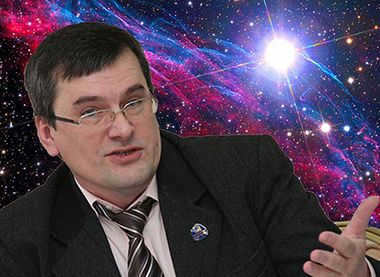
Nikolai Gorkavy is a renowned astrophysicist with a doctorate in F.M.Sc. He gained recognition for his groundbreaking work in predicting the system of new satellites of Uranus, which earned him the prestigious USSR State Prize in 1989.
From his early career until 1998, Gorkavy was affiliated with the Simeiz Observatory in Crimea. However, since 1998, he has been working at the NASA Goddard Space Flight Center in the United States. Currently, he holds the position of Director at the private Greenwich Institute of Science and Technology.
Gorkavy is also known for his contribution to cosmology, particularly for his development of the oscillating Universe model with variable gravitational mass, commonly referred to as the Gorkavy-Vasilkov model.
Aside from his scientific achievements, Gorkavy is a talented writer. He has authored the highly acclaimed science fiction trilogy “Astrovitian” as well as “Scientific Tales,” which are beloved by both children and parents.
On March 3, 2021, we released our publication together with Nikolai Gorkav titled “Black Holes and Neutron Stars in an Oscillating Universe”.
Later, on August 8, 2021, an article was published on naked-science.ru discussing our publication. The article was titled “The shrinking universe will push us into a black hole. But it will not be easy to notice the end of the world”.
On August 4, 2021, Nikolai Gorkavy shared his comments on the publication.
Additionally, on August 3, 2023, Nikolai Gorkavoy published a popular science book called “Oscillating Universe”.
Kirill Lvovich Maslennikov, known as “Astrodad”
Kirill Maslennikov.Kirill Maslennikov, a Physics and Mathematics Ph.D., is a senior researcher at the Pulkovo Observatory. He is known as Astroded and is the host of the column “Notes of an Astronomer” on the science and technology channel “QWERTY”.
Alexander Dmitrievich Panov, a renowned physicist and astrophysicist, is currently serving as a leading researcher at the Research Institute of Astrophysics at Moscow State University.
On 23.02.2023, an intriguing interview took place on the OSNOVA channel, featuring Boris Vedensky, where they discussed the ongoing challenges in the quest for extraterrestrial civilizations. Titled “ASTROPHYSIC Panov: Futurologist in the Cosmos,” this interview shed light on the current state of this captivating field.
Oleg Vasilyevich Verkhodanovis an astrophysicist
Oleg Vasilyevich Verkhodanov (17.03.1965-05.04.2020). Fondly remembered!
A distinguished physicist and mathematician, Oleg Verkhodanov was an astrophysicist who worked at the Special Astrophysical Observatory of the Russian Academy of Sciences in Zelenchukskaya village, North Caucasus. He was also known for his engaging popular science lectures.
On March 1, 2020, he delivered a lecture on the channel “Anthropogenesis.ru” discussing the widely accepted Big Bang theory:
“Debunking Myths about the Big Bang: How did the universe emerge from nothing?”
Vladimir Georgievich Surdin is an astrophysicist with a Ph.D. and is currently a senior research fellow at the P.K. Sternberg State Astronomical Institute of Moscow State University.
On 03.08.2020, he was interviewed by Irina Shikhman on the channel “And to talk?” where he discussed the exploration of the Moon, Venus, and Mars.
Sergey Borisovich Popov is a renowned astrophysicist.
Sergei Borisovich Popov is a highly accomplished astrophysicist and leading researcher at the P.K. Sternberg State Astrophysical Institute of the Moscow State University. He holds a Doctorate in Physics and Mathematics, and his contributions to the field are highly regarded.
Borisovich Eugenevich Stern is also an esteemed astrophysicist in his own right. His expertise and dedication to the study of astrophysics have made him a respected figure in the field.
Borisovich Evgenyevich Stern is an astrophysicist and leading researcher at the Institute of Nuclear Research of the Russian Academy of Sciences and the Astro Space Center of FIAN. He is also the editor-in-chief of the newspaper “Troitsky Variant – Science”.
The O.V. Verkhodanov Astrophysical School of the Trajectory Foundation
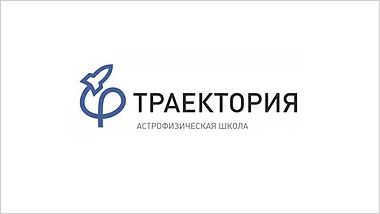
The Astrophysical School of the Trajectory Foundation. The O.V. Verkhodanov Astrophysical School of the Trajectory Foundation. O.V. Verkhodanov Astrophysical School.
This project offers a three-year program of both full-time and part-time classes for high school students who have a keen interest in the field of astronomy and astrophysics.
During their time at the school, students will be exposed to a unique curriculum that covers subjects such as physics, mathematics, astronomy, and English. They will also have the opportunity to participate in astronomical observations, interact with practicing scientists, and engage in scientific problem-solving activities.
For more information, please visit our website at www.astroschool.space.
You can find the complete list of lectures offered by the Astrophysical School “Trajectory” here.
“Astronet”
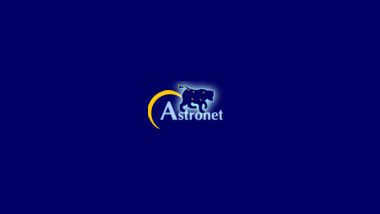
"Astronet" is a website that provides astronomy news, astro-ph reviews, articles, and books. It is a platform designed for both advanced amateurs and professionals in the field of astronomy. You can find more information by visiting www.astronet.ru.
"N+1"






